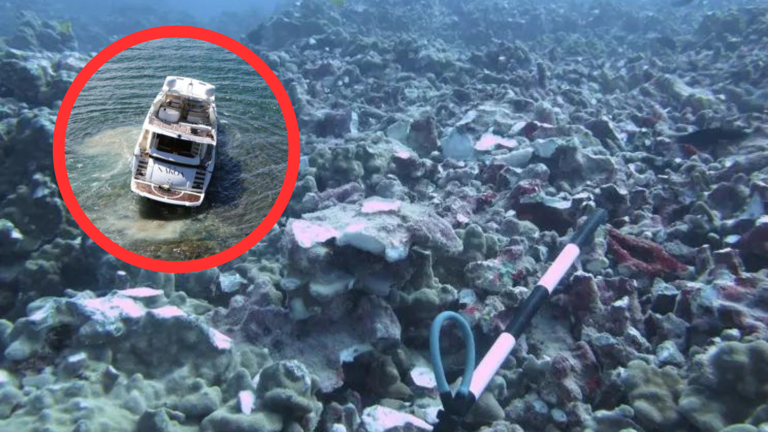Coral reefs worldwide are already grappling with the impacts of shifting temperatures, tourism, and overfishing. However, off the coast of Maui, a Hawaiian reef faces an additional threat—a luxury yacht that has run aground, inflicting significant damage on the delicate ecosystem. This incident adds to the mounting pressures that coral reefs endure, further underscoring the urgent need for their protection and conservation.
In late February, a sizable luxury yacht named Nakoa, measuring 94 feet in length and weighing 120 tons, became grounded on Maui’s shores. The incident resulted in substantial harm to the local coral reef, impacting an area spanning over 19,400 square feet—equivalent to slightly over four basketball courts in size.
Remarkably, the Nakoa remained lodged on the reef for a duration of two weeks before it ultimately sank to a depth of 800 feet. Regrettably, the sinking process inflicted further damage upon the reef as the yacht was being towed back to Honolulu.
During the initial evaluation conducted by divers from the Hawaii State Division of Aquatic Resources, the damage caused by the grounding of the Nakoa was assessed. At first, it was determined that 19 coral colonies had been affected. However, as the yacht was subsequently dragged along the seabed, the extent of the impact escalated significantly. The aftermath revealed a total of 101 coral colonies impacted by the incident, accompanied by damage to an area measuring around 3,000 square feet of live rock.
Coral reefs are experiencing a concerning decline globally due to several factors, including tourism, shipping, and rising temperatures.
When ocean temperatures rise to a certain threshold, the coral becomes stressed and expel the symbiotic algae that reside within them. This expulsion results in the characteristic bleaching of the coral. If the stress persists for an extended period, the coral may not be able to reestablish its symbiotic relationship with the algae. Without the crucial presence of the algae, the coral ultimately succumbs and dies.
Between 2014 and 2015, Hawaii experienced devastating mass bleaching events that resulted in significant coral reef loss. In certain instances, up to 50% of the coral was unable to survive the bleaching process.
Coral reefs in Hawaii face additional threats from human activities. Passing boats and the unintentional trampling of scuba divers can cause physical damage to the delicate reefs. Moreover, the negative impacts of over-tourism become evident through increased littering, local wildlife disturbance, and sunscreen pollution. These factors collectively contribute to the degradation and vulnerability of the reefs in the region.
Scientists have issued a dire warning that unless substantial measures are taken to safeguard coral reefs, they could disappear entirely by 2050, leading to devastating consequences for marine biodiversity.
The potential loss of coral reefs poses a significant threat to the diverse array of marine life. These reefs serve as habitats for approximately 25% of all fish species found in the world’s oceans and play a vital role in shielding coastal regions from the impact of storms.
In Hawaii alone, an astonishing 7,000 plant and animal species are estimated to reside within the expansive 410,000-acre coral reef. Notably, 1,250 of these species are unique to the Hawaiian shoreline, highlighting the exceptional ecological value and irreplaceable nature of these coral ecosystems.
Collaborative efforts between Maui’s Ocean Center Marine Institute and Hawaii’s State Division of Aquatic Resources are currently underway to restore the damaged reef to its former health.
Dedicated divers from Maui’s Ocean Center Marine Institute have already managed to retrieve over 100 displaced coral fragments, with ongoing efforts to locate additional pieces. These coral fragments will be carefully nurtured and cultivated in the marine institute’s laboratory to facilitate their growth. The ultimate aim is to utilize these cultivated corals in future initiatives focused on restoring degraded reefs.
Once optimal conditions are restored in the ocean, the retrieved coral fragments will be reintegrated and reattached to the affected areas of the reef.
The responsibility for the expenses related to salvaging the damaged rock and coral lies with the owner of the yacht. However, the owner has faced a setback as their insurance coverage for the removal has been denied. As a result, they have sought the assistance of a bankruptcy attorney to navigate the legal and financial implications of the situation.
































